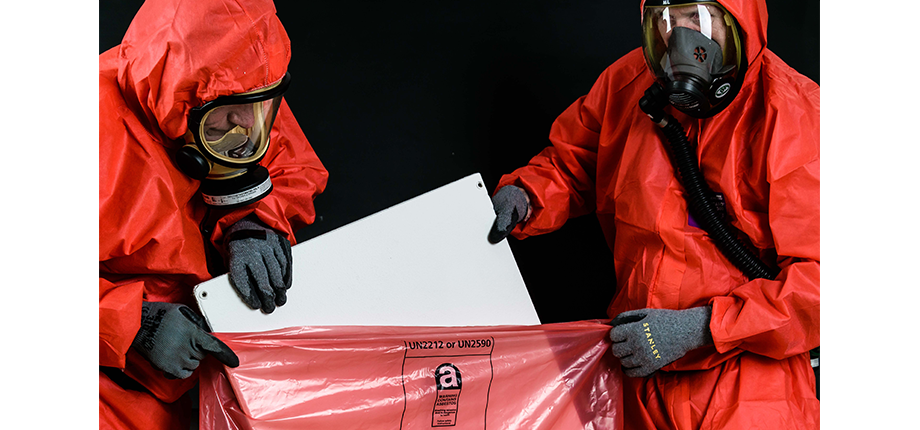The Asbestos Removal Contractors Association advises housing providers on the legalities of dealing with asbestos…
What are your legal duties?
It is vital that owners and managers of properties, constructed prior to the year 2000, take the risks from asbestos seriously and deal with asbestos in a controlled and safe manner. Today it is still the greatest cause of work-related deaths in the UK, with currently approx. 5,000 asbestos-related cancer deaths per year.
Health and safety
With regard to people’s health and safety at work the overarching legislation is the Health and Safety at Work Act etc.1974. This places a duty on every employer to ensure, so far as reasonably practicable, the health, safety and welfare at work for all employees and non-employees who may be affected by the employer’s activities.
Where is asbestos?
Specifically relating to managing and working with asbestos is the Control of Asbestos Regulations 2012 (CAR 2012). Within this, Regulation 10 states that employers need to make sure that anyone liable to disturb asbestos during their work, or who supervises such employees, receives the correct level of information, instruction and training to enable them to carry out their work safely and competently, and without risk to themselves or others.

Asbestos awareness training should be given to employees whose work could foreseeably disturb the fabric of the building and expose them to asbestos or supervise or influence the work. This includes maintenance staff, plumbers, and building surveyors.
Regulation 5, requires employers to identify the presence of asbestos and its type and condition before any building, maintenance or other work, liable to disturb asbestos, begins. It also sets out the requirement to arrange an asbestos survey if existing information on the presence of asbestos in the premises is incomplete or appears unreliable.
Manage the risk from asbestos
Regulation 4 of the CAR 2012, covers non-domestic properties, as well as the common parts of domestic premises (e.g. corridors, garages, roof space, boiler rooms) and guest accommodation (e.g. hotels and care homes). This requires the duty holder to make an asbestos register available to any worker/contractor carrying out maintenance or other work on/in the premises.
An asbestos register, created by the duty holder, is a record of the location of asbestos-containing materials (ACMs) and the condition, including a drawing of the premises. It should be dated, as periodic reviews should be carried out, so an up-to-date record is available. Work at premises should only start once the duty holder is satisfied that the information in the asbestos register, is known and understood by workers who are doing work on-site, and is easily accessible for anyone who needs to inspect it.
Even when Regulation 4 does not apply, section 3 of the Health and Safety at Work Act etc. 1974 does apply to anyone conducting a business, such as landlords of domestic premises. This stipulates that an employer (or a self-employed person) must ensure, so far as is reasonably practicable, that the conduct of their undertaking does not present a risk, which includes risks from asbestos, to the health and safety of people who are not their employees.
Asbestos removal
When managing construction projects, a duty holder/client has explicit responsibilities under the Construction (Design and Management) Regulations 2015 (CDM 2015), and if asbestos removal is required, they need to appoint a competent asbestos removal contractor. Therefore, they need to make reasonable enquiries to satisfy themselves that a contractor is appropriately resourced and competent for the work.
How can clients reassure themselves of competency?
Firstly, does the asbestos removal project require a contractor to hold a licence from the Health & Safety Executive (HSE)? Secondly, is the contractor audited, i.e. are independent on-site verification inspections undertaken to ensure compliance with requirements? Take the Asbestos Removal Contractors Association (ARCA) as an example, members (HSE licence holders) need to complete two satisfactory ‘unannounced’ site audits every year to maintain membership, so providing reassurance that good practices are continually demonstrated.
Asbestos is a hidden danger as asbestos-containing materials could be found in numerous places within a building, such as pipe lagging, insulation board, vinyl floor tiles and cement. Being aware of where asbestos can be found, and how to manage the risks, is vital to reducing the health risks faced by workers and the public.
The human cost of asbestos disease is devastating and significant exposures are entirely avoidable. Also, the financial and reputational costs of getting asbestos management wrong are substantial.
For support the Asbestos Removal Contractors Association has produced guidance documents which are available to download in the clients’ section at www.arca.org.uk
- Log in to post comments













